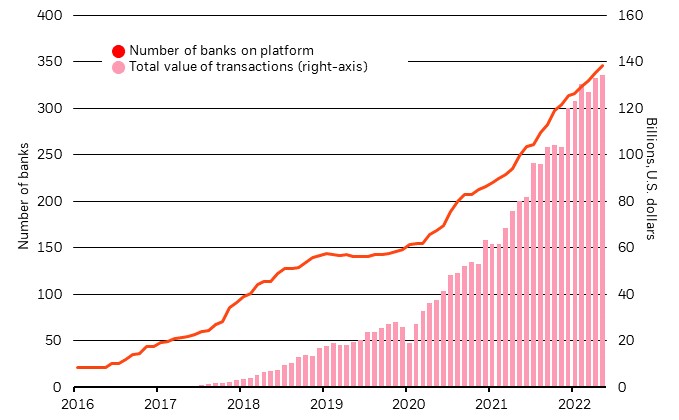Global investors should tap into India’s increasingly liquid and accessible market in the medium term, even though the world’s fifth-largest economy cannot shrug off geopolitical and financial woes, the says.
“We see India as a large, increasingly liquid and investable Asian market with unique domestic dynamics at play that global investors should look to get access to in portfolios. It also underscores why differentiation within emerging markets is key,” Prasoon Agrawal, portfolio manager, fundamental equities and Ben Powell, Asia-Pacific chief investment strategist, said in a recent note.
As China’s trade and diplomatic relations have soured, raising questions about supply chains – and intensified by the pandemic – India’s role as a manufacturing and business hub has risen. This news service has written about how investors cannot afford to ignore a country that in the past hasn’t always been open to foreign investment. Under the government of Narenda Modi, the country has taken a distinct “modernisation” path. (See other examples of articles about India here and here.)
The BlackRock authors note that next year, India is likely to overtake China as the world’s most populous nation (citing data from the United Nations Development Programme’s latest assessment).
“And with a median age below 29, it is a relatively young country with such a large working age population. Yet that is only one part of the story. The other critical aspect is anticipated increases in productivity,” they wrote.
“This has been a challenge in the past – feeding a perception that India is a country of slow-moving bureaucracy and creaking infrastructure. However, we see signs on the ground that challenge some of these perceptions and make us more optimistic over the medium term,” they continued.
Dynamics
“India is not immune to global risks, yet we believe its unique domestic dynamics put it on a firm footing over the medium term and underscore why differentiation is key when assessing emerging markets,” they said. “Most notable among these dynamics are certain structural forces at play – such as improvements to daily life facilitated by India’s successful rollout of its biometric ID system a decade ago to nearly all its citizens, a more efficient tax regime and a gradual shift towards more productive, formal-sector jobs from informal sectors.”
The authors cite a technology development as a reason for optimism.
“Benefits of Aadhar – India’s biometric ID system launched a decade ago and which takes its name from the Hindi word for foundation – are becoming increasingly apparent, particularly via making the day-to-day life of consumers more convenient. India has issued 1.3 billion unique biometric IDs so far, according to data from the Unique Identification Authority of India as of 31 August 2022,” they wrote.
“These have become the building blocks for a range of technological and social innovations – ranging from the near-ubiquitous person-to-person mobile payments all the way to government subsidies paid directly to those who need them the most. This is leading to greater convenience and efficiency while minimising slippages that had historically bogged down the system,” they continued.
“From near-zero transactions in 2016, the platform saw $134 billion worth of transactions with more than 300 banks signed up as of August 2022 – with growth accelerating through the pandemic, as shown in the chart below. This explosion in payments is just one example of the improvement in day-to-day efficiency post-Aadhar. Others include the direct benefit transfer system of delivering government subsidies that aim to deliver payouts directly to those who need them the most,” they continued. The writers considered the realm of mobile payments.
“The proliferation of smartphones and the ease with which India’s Unified Payments Interface has scaled up to work for a large population means it has quickly become the go-to method of making all kinds of payments – from bills to groceries to cross-border money transfers,” they said.

Source: BlackRock Investment Institute, with data from the National Payments Corporation of India, August 2022. Note: The chart shows the number of banks signed up to India’s Unified Payments Interface and the total value of monthly transactions conducted.
“From near-zero transactions in 2016, the platform saw $134 billion worth of transactions with more than 300 banks signed up as of August 2022 – with growth accelerating through the pandemic, as shown in the above chart. This explosion in payments is just one example of the improvement in day-to-day efficiency post-Aadhar. Others include the direct benefit transfer system of delivering government subsidies that aim to deliver payouts directly to those who need them the most,” they continued.
More generally, the authors said: “Productivity gains so far are most visible for the consumer. There is still room for improvement on the corporate side. Supply chain inefficiencies remain problematic. Yet the rollout of harmonised good and services taxes (GST) across 27 of India’s 28 states for everything except land, alcohol, and petroleum – is helping iron out some problems.”
“Why? A single GST across the country means companies do not need to maintain warehouses in each state they do business in to manage supply,” they added.
